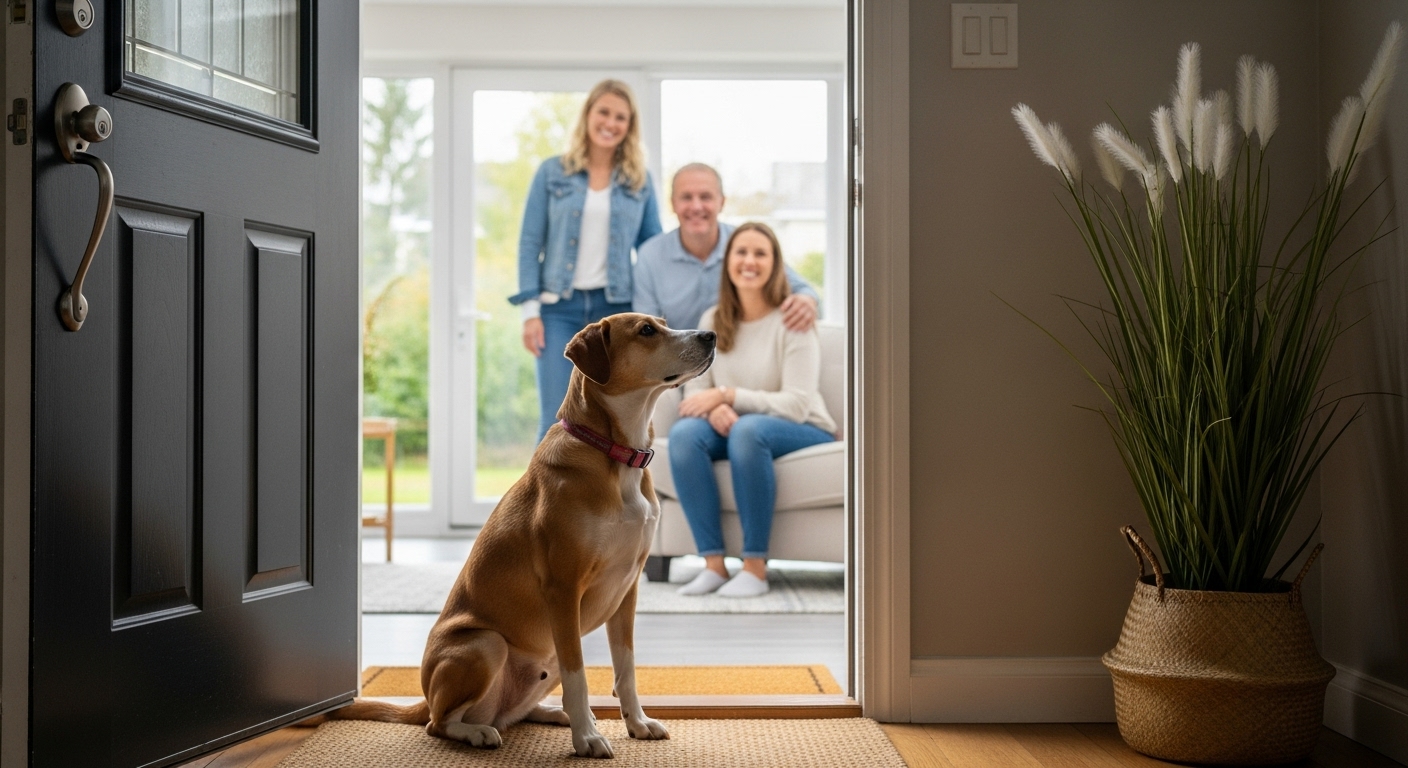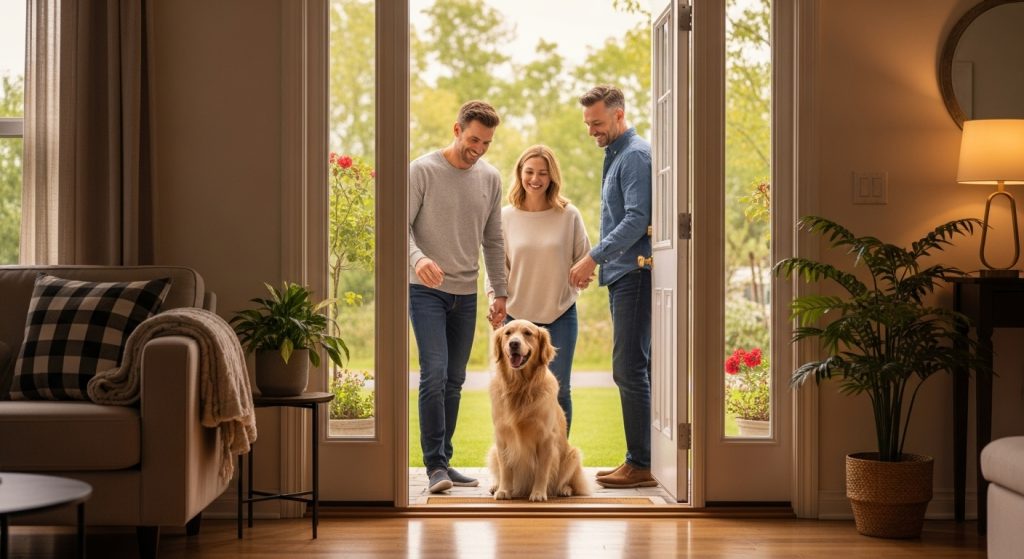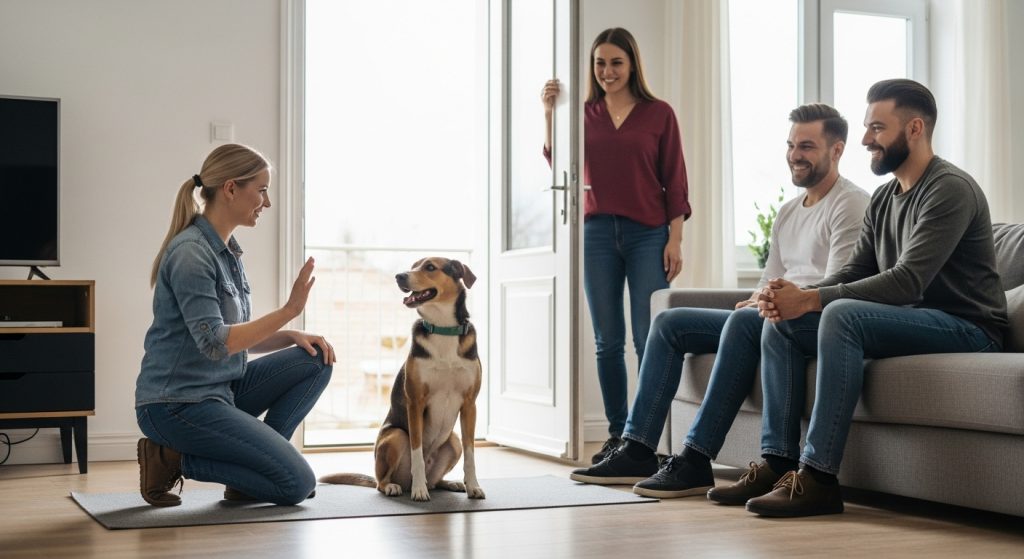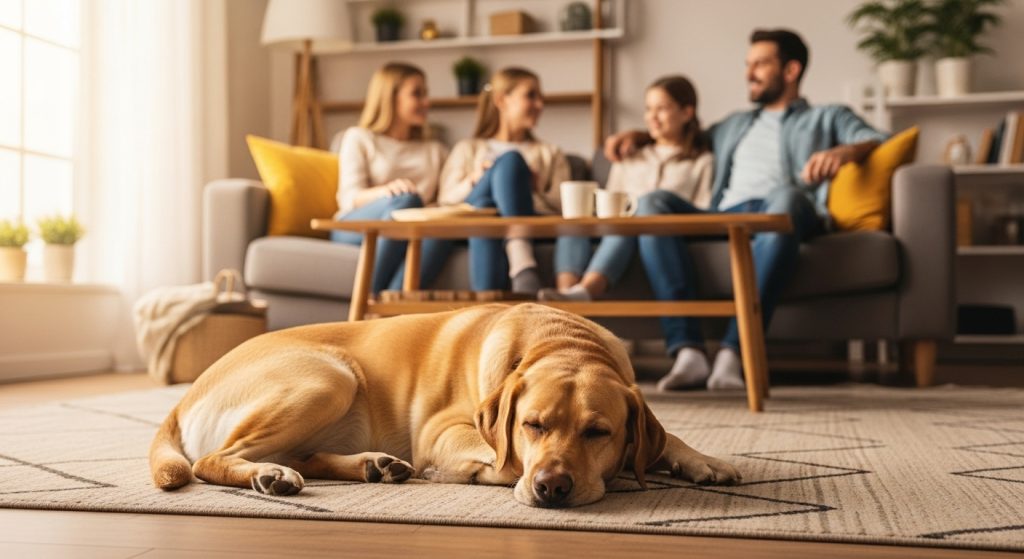Welcoming friends or family should be a joyful experience — not a stressful one. But if your dog barks, jumps, or gets overly excited every time someone visits, it can turn greetings into chaos. The good news? With consistent training and patience, you can teach your dog to stay calm and well-mannered when guests arrive.
In this complete guide, you’ll learn how to train your dog to be calm around guests, reduce anxiety and excitement, and create a peaceful, friendly atmosphere for everyone who walks through your door.
Understanding the Root of the Problem — Why Dogs React to Guests
Before training your dog to behave better around visitors, it’s important to understand why dogs get so worked up in the first place. Most often, it’s not disobedience — it’s emotion.
1. Excitement or Overstimulation
Dogs are naturally social animals. When new people arrive, your dog may feel an overwhelming rush of joy and adrenaline. Barking, jumping, and tail wagging are their way of saying “hello!”
However, without clear boundaries, that excitement can spiral into chaos.
2. Fear or Anxiety
Not all dogs greet visitors with excitement — some react with fear. Rescue dogs or those with limited social exposure might perceive guests as a threat. Growling or hiding under furniture can signal stress rather than aggression.
3. Territorial Instincts
Dogs are protective by nature. When someone enters their home, they may feel the need to defend their territory. This instinct can trigger barking or pacing behavior.
4. Inconsistent Rules and Reinforcement
If guests sometimes play rough or give treats immediately upon arrival, your dog learns that excitement brings rewards. Consistency is key to helping them understand calm behavior is what earns attention.
Step-by-Step Training — Teaching Calm Behavior Around Guests
Once you understand what drives your dog’s behavior, it’s time to put training into action. The goal is to replace uncontrolled excitement or fear with calm confidence.
1. Establish a Pre-Guest Routine
Before guests arrive, burn off your dog’s excess energy with a walk or play session. A tired dog is less likely to get hyper or anxious.
Give them a potty break too — physical comfort helps emotional calm.
2. Use Controlled Exposure
Start small. Ask a friend to help with practice visits.
Have them ring the doorbell while you guide your dog to a designated calm spot, like a bed or mat. Reward your dog for staying there quietly.
Repeat this process until your dog associates the sound of guests arriving with positive, calm experiences.
3. Teach the “Place” Command
The “place” command is invaluable for guest scenarios.
-
Point to a mat or bed and say “place.”
-
When your dog stays there, offer treats or gentle praise.
-
Gradually extend the time they must stay before getting a reward.
This teaches your dog that their role during guest arrivals is to stay still and composed.
4. Ignore Overexcited Behavior
When guests arrive, instruct them not to pet or talk to your dog until it’s calm. Attention fuels excitement. Once your dog sits quietly, allow greetings with calm energy and praise.
5. Use Desensitization and Counter-Conditioning
For fearful or anxious dogs, gradual exposure paired with rewards works wonders. Have guests toss treats from a distance, slowly decreasing space over multiple sessions.
Maintaining Long-Term Calm — Reinforcement, Environment, and Guest Cooperation
Once your dog understands the basics, maintaining calm behavior requires consistency and structure. Even the best-trained dogs can regress without reinforcement.
1. Reward Calmness Every Time
Every visit is a training opportunity. Whenever your dog stays relaxed around guests — even briefly — offer quiet praise or a small treat. Positive repetition strengthens long-term habits.
2. Set Up a Calm Environment
Play soothing background music or use calming pheromone diffusers before guests arrive.
Keep toys or chew treats handy to redirect energy if needed.
Avoid hyping your dog up with phrases like “Who’s here?!” — excitement words can trigger old behaviors.
3. Ask Guests to Follow Your Rules
Not all visitors understand dog behavior. Politely explain your training process before they come over.
Example:
“We’re training Bella to stay calm when guests arrive, so please ignore her until she’s sitting quietly.”
Most guests will happily cooperate when they understand it’s part of a training plan.
4. Use Short Guest Sessions for Practice
If your dog struggles with long visits, start with short, structured sessions. Gradually increase duration and number of people to build tolerance and confidence.
5. Be Patient and Consistent
Training takes time. Every dog learns at a different pace depending on age, breed, and personality. Stay consistent, and avoid punishment. Calm energy, repetition, and rewards always work better than scolding.
A Peaceful Home for You and Your Guests
Training your dog to be calm around guests isn’t just about obedience — it’s about emotional balance and trust. By understanding your dog’s triggers, setting consistent rules, and reinforcing calmness, you’ll transform chaotic greetings into peaceful welcomes.
With patience, practice, and positivity, your dog will learn that calm behavior brings the best rewards — love, praise, and maybe a few extra belly rubs from impressed visitors.
So the next time the doorbell rings, take a deep breath, smile, and know that both you and your dog have got this!




